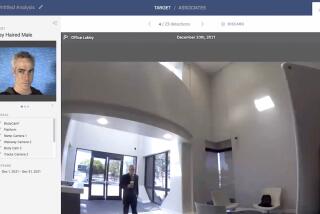Technology targets pay-TV piracy
- Share via
Two companies are introducing technology to thwart people who make illegal copies of video-on-demand and cable television pay-per-view content.
Both systems, one from Philips Electronics and another from Cinea Inc., a unit of Dolby Laboratories Inc., insert an invisible digital watermark into the content before it is viewed.
The digital fingerprint contains information that would enable a cable TV company to identify the specific subscriber.
The information cannot be seen by a viewer but is robust enough that it will stay with the content after it has been copied several times, or even if someone makes a camcorder copy directly off a screen.
The Philips system, dubbed VTrack, inserts the watermark as the signal passes through a cable set-top box or cable-ready digital televisions.
The system from Cinea, called Running Marks, inserts the watermark into the digital stream before it leaves the cable operator or other video-on-demand provider.
Both systems will be demonstrated at the upcoming National Assn. of Broadcasters show in Las Vegas.
“Now we see high definition being introduced on a larger scale and we know content owners are particularly concerned about protecting their high-def content,” said Alex Terpstra, chief executive of Philips Content Identification, a division of Royal Philips Electronics of the Netherlands.
Both systems can also be adapted for use in high-definition broadcast signals.
Studios and TV networks have been lobbying for hardware and software-based copy protection mechanisms as the nation makes the shift from analog signals to digital.
Both Philips and Cinea have also worked with studios to protect copies of films that are sent to voters for the annual Academy Awards.
More to Read
Inside the business of entertainment
The Wide Shot brings you news, analysis and insights on everything from streaming wars to production — and what it all means for the future.
You may occasionally receive promotional content from the Los Angeles Times.









